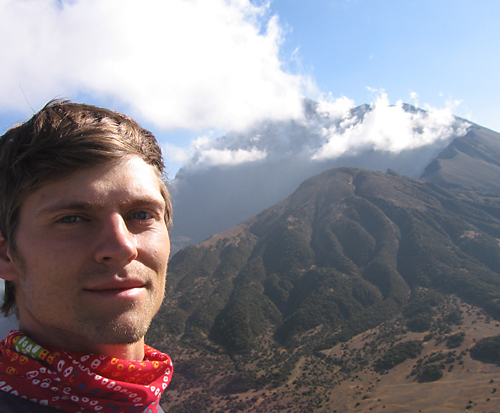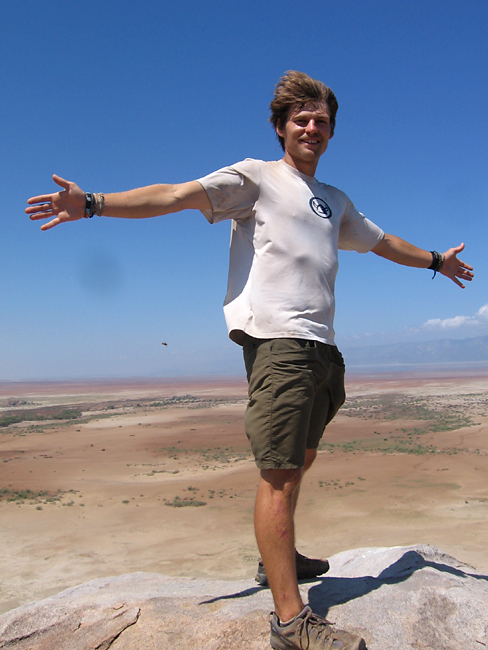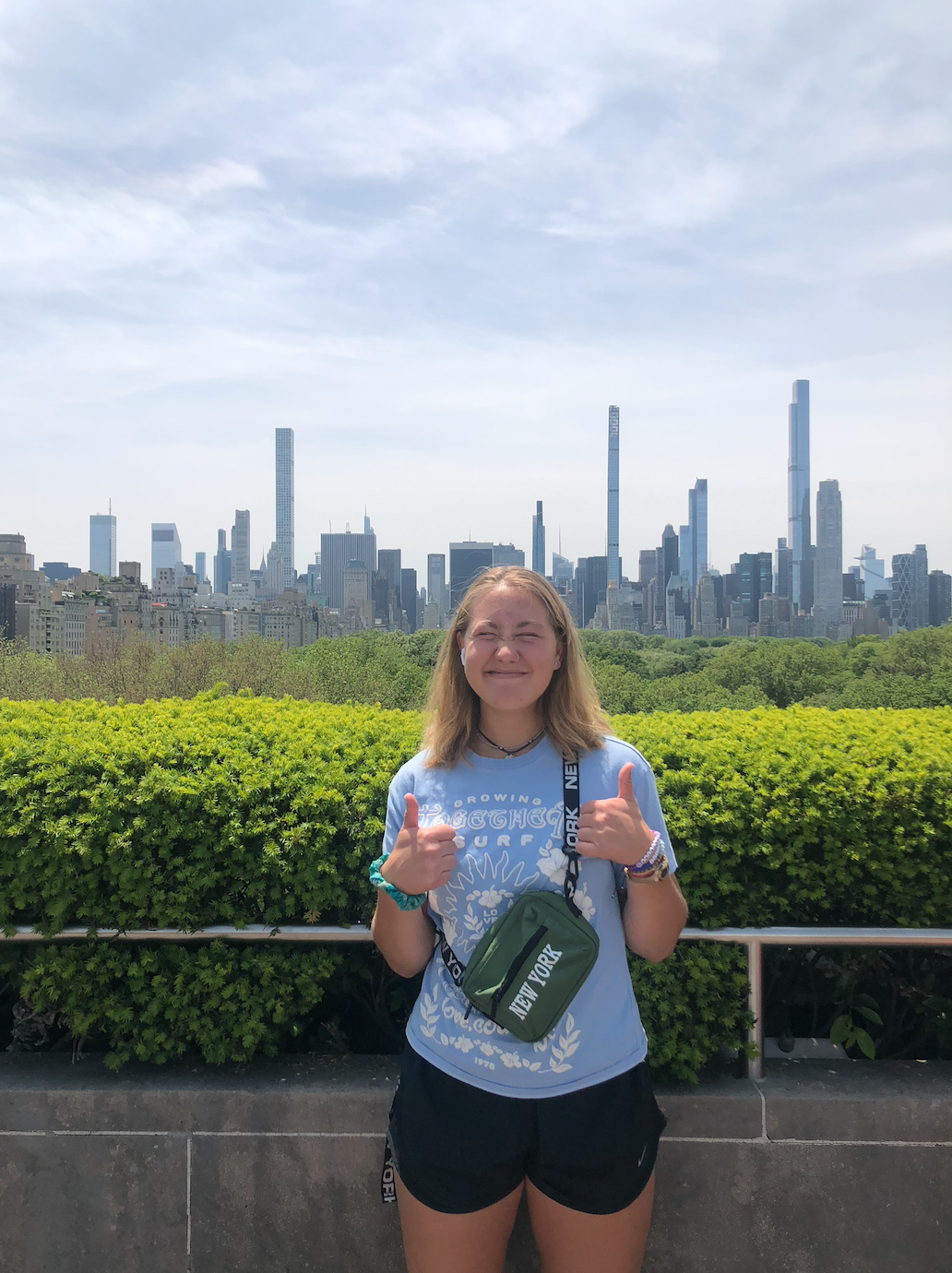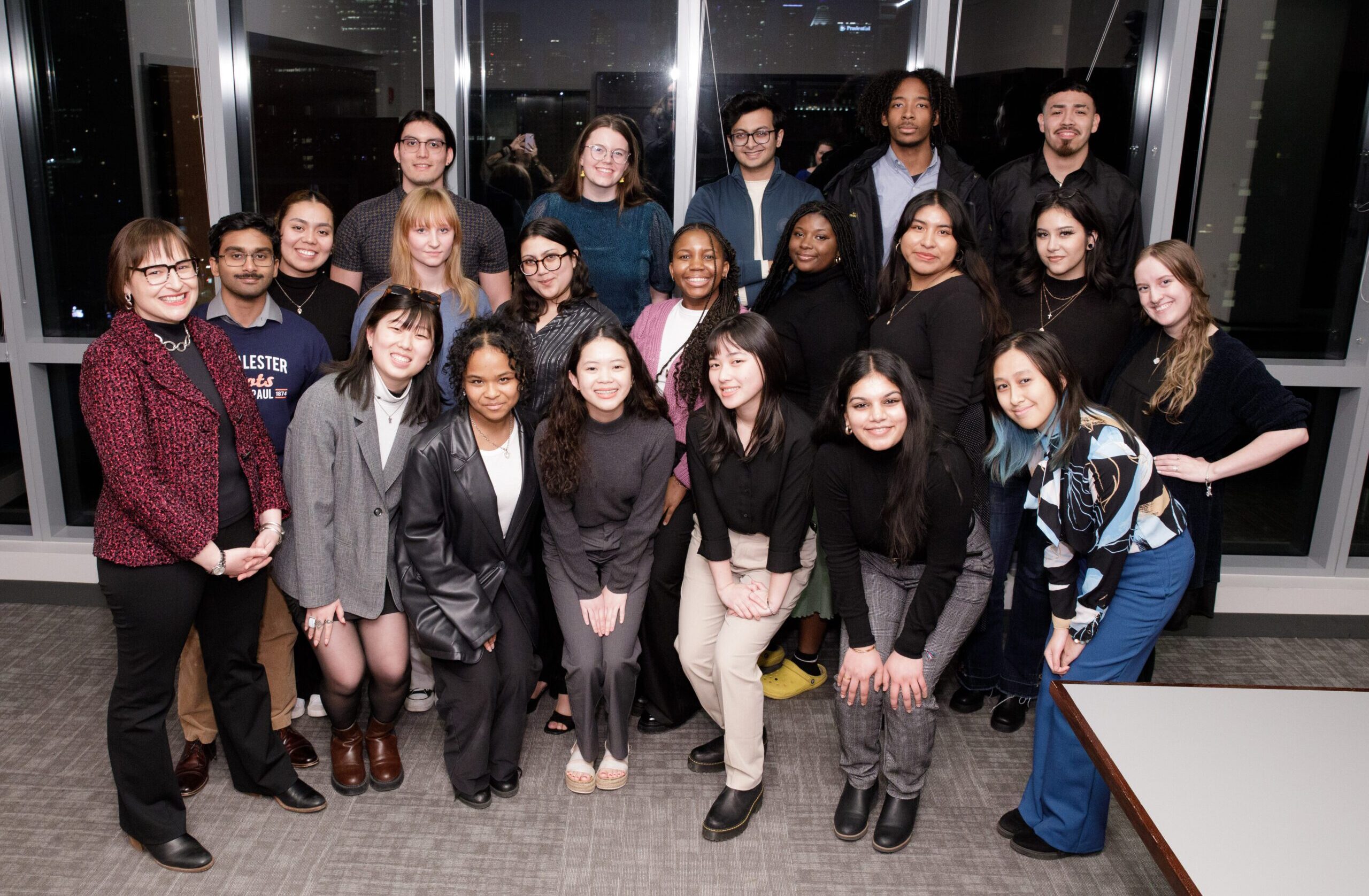“I had never seen a person drink from a water source that was so dirty and salty, it was nearly opaque,” said Sean Keenan, a senior at Luther College majoring in environmental studies who participated in the ACM Tanzania Program. The image stuck with him, and led him to ask what he could do to help in such a situation.
 Sean Keenan
Sean Keenan
In a very down-to-earth way in a rural village in East Africa, Keenan saw how knowledge of geology and other environmental sciences, applied to finding sources of clean water, potentially could have a huge impact on people’s health, livelihoods, and daily lives.
“Ultimately, my experience in Tanzania has had a significant impact on my life,” said Keenan, “and I do think that it’s facilitated ideas that I can be passionate about for the rest of my life.”
This spring, Keenan told his story at the 2010 ACM Student Symposium on Off-Campus Study, a two-day celebration of the many ways that off-campus study enriches students’ education and personal growth. Video clips of his presentation, along with all the other students’ presentations and panel discussion sessions, can be found on the Student Symposium webpage.
Opportunities and challenges
Having grown up exploring the woods and bluffs of his native eastern Iowa, Keenan loves hiking, rock climbing, and simply spending time outside. He was drawn to the ACM Tanzania Program by the diversity of activities and locations it offers.
“Tanzania is definitely a beautiful place,” said Keenan. “I didn’t want to be at a university setting the entire time. It was just a really cool program – you move around a lot and get to see all kinds of new places…. It was a unique opportunity to be in a rural setting, living near a village, conducting research on your own.”
 Lake Manyara basin, near the ACM Tanzania Program field site.
Lake Manyara basin, near the ACM Tanzania Program field site.
The program’s combination of an independent field project and courses certainly presented challenges. “Most of my academic endeavors (on campus) are pretty well set,” Keenan noted. “I know what I’m going to be doing in a class, or have a good idea. But this was – ‘Whoa, I have no idea how this is going to go.'”
So Keenan rolled up his sleeves and got to work. During the initial weeks in Tanzania, he gathered information, talked to professors at the University of Dar es Salaam and to Program Director Chet Cain, and shaped his independent project to take best advantage of the program’s field site at Tarangire National Park in the country’s northern region.
His project focused on general landscape geology – observing and documenting outcroppings, soil profiles, and other features – and compiling what he called “a database of information that can be used to study what was happening there (geologically) 50,000 to 100,000 years ago.”
Linking science and people
While the students were in the field, the weather was so dry that the local waterholes, especially those used for livestock, had dried up. The situation was dire. Water was both scarce and of horrible quality, threatening the livelihoods – and even the lives – of the Maasai people who lived in the area.
 Maasai homes in the Ngorongoro Conservation Area.
Maasai homes in the Ngorongoro Conservation Area.
“Seeing kids drink water out of these bottles that were just completely dirty …” said Keenan, his voice trailing off as he recalled the experience. “A lot of people were walking five kilometers just to get to areas where there was clean water. It makes it really hard to get enough water for their families and animals.”
“In the process of my field experience, whether I was surveying geologic exposure, walking transects, or asking permission from landowners (to cross their land), I found myself much more interested in what people were up to and how they were doing rather than the geology of the area,” Keenan said. “It was interesting to study geology and the Maasai culture at the same time because it made me start to think about where those two things meet – where objective science meets the humanities, where natural resources and humans meet. So I can say that a lot of my growth was in taking observations and making connections between people and the land.”
“These (water) situations could be bettered, in my mind at least, optimistically,” Keenan continued. “Someone with a knowledge of geology and the landscape could definitely provide assistance for communities in terms of where they build their community wells and where they get their water.”
Looking toward the future
After the program ended and he returned to the Luther campus, Keenan noted, he had time to think about what he saw and learned in Tanzania. “This is a lot of where my personal growth happened, making sense of what I’d seen and how I felt about it,” he said. “I found that I was a lot more passionate about and interested in people than I ever thought I was before.”
He channeled the interests sparked by his experience on the Tanzania Program into writing his senior paper about climate change, and how the projected changes will put additional pressures on water resources in East Africa.
 Sean Keenan atop granite plutons in the Lake Eyasi Basin in northern Tanzania.
Sean Keenan atop granite plutons in the Lake Eyasi Basin in northern Tanzania.
“That (paper topic) was definitely right out of the experience (in Tanzania),” Keenan said. “I really didn’t have any ideas of what my senior paper was going to be about” before going on the program.
He also has been studying integrated water resources management, in which a number of different water uses are integrated into one overall scheme. “That’s going to be a lot more sustainable (over time) than a sectored approach that keeps agriculture and personal uses all separate,” he noted.
“In light of how crucial water is in every facet of our lives, I’d someday like to use my energy to work toward improving water resources for people now and people in the future and help to put the three percent of fresh water we do have on this planet to good use.”
All photos courtesy of Sean Keenan.
Links:
- ACM Tanzania: Ecology & Human Origins program
- 2010 Student Symposium on Off-Campus Study and video clips of Sean Keenan’s presentation








